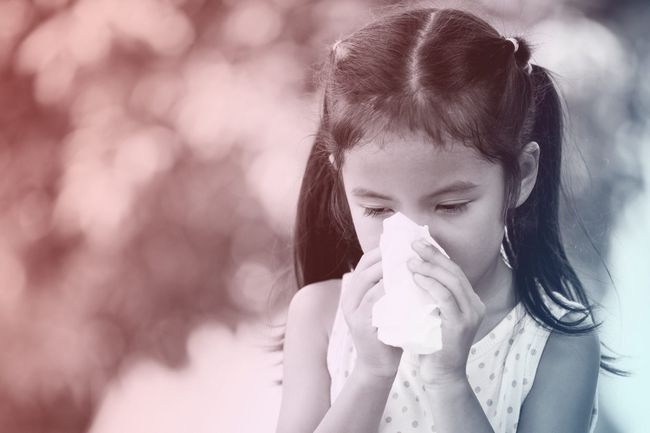Not only does respiratory syncytial virus (RSV) tend to peak during cold and flu season, this respiratory virus also mimics a cold when it comes to symptoms. But unlike a cold, RSV can progress to the lower respiratory tract in some cases making the risks of this common (and incredibly contagious) virus very different depending on your age.
- RELATED: What Parents Need to Know About the RSV Outbreak
RSV is most dangerous in newborns and infants younger than 6 months of age. That’s because it causes a substantial amount of inflammation in the airways and extra mucus production in both the nasal and lung airways. These blockages can make it very difficult to breath, particularly in young infants with tiny airways. While RSV is typically much less dangerous for older children and adults, it can cause lower respiratory tract infection and severe illness in immunocompromised children and adults (e.g. transplant or cancer patients).
So how do you know if it's RSV or a cold? Here, experts offer their guidance for families with kids of all ages.

RSV Symptoms in Babies and Infants
In the most vulnerable age group, infants under 6 months, RSV can be a big deal. According to Amina Ahmed M.D., professor of pediatric infectious disease and immunology at Atrium Health's Levine Children's Hospital, the typical symptoms are fever, nasal congestion or rhinorrhea (runny nose), and cough. More severe symptoms of RSV in babies can include lethargy, poor feeding, and shallow, rapid breathing, which can lead to respiratory distress.
Due to the often extreme nasal congestion common with RSV, along with the difficulty breathing, the infant is unable to feed properly. This can lead to dehydration.
- RELATED: RSV in Infants: Everything Parents Need to Know
RSV Symptoms in Toddlers
By the time your baby reaches the toddler years, there's a good chance RSV won't hit them quite as hard. They're more likely to have symptoms of RSV that mirror a cold, but likely with much more mucus. When it comes to RSV versus a cold, think snot everywhere, says Jason Newland, M.D., a pediatric infectious disease physician at St. Louis Children's Hospital. "Getting that secretion and snot out is very important," he says, since most toddlers still aren't old enough to handle this on their own.
- RELATED: Toddler Cough: Causes, Treatment, and When to Worry
RSV Symptoms in Kids and Adults
For kids over 3 years old, as well as most healthy adults, the symptoms of RSV almost identically mimic a cold. That's because they have most likely had RSV several times and built up immunity, says Dr. Ahmed. Symptoms of RSV and a cold can include the following, according to the Mayo Clinic:
- Congested or runny nose
- Dry cough
- Low-grade fever
- Sore throat
- Mild headache
On occasion, RSV in adults or children can progress into bronchiolitis, which can cause wheezing along with a more severe cough. But while these symptoms do indicate a lower respiratory tract infection (as opposed to upper respiratory tract, which is what a common cold is), the illness is usually not severe enough to warrant hospitalization, says Dr. Ahmed.
RSV Symptoms in the Elderly
Elderly people often have a compromised immune system. That's why, just like infants, they can become severely ill from RSV. This can result in lower respiratory tract infection similar to pneumonia that can cause wheezing or difficulty breathing. In cases like this, the elderly sufferer may require oxygen and hospitalization. The extremes of age (very young and very old) are the ones most likely to have severe disease, Dr. Ahmed says. The following are symptoms of RSV in older adults that warrant medical attention ASAP:
- Cyanosis (a blue tint) of the lips and/or nails
- Deep cough with wheezing
- High fever
- Difficulty breathing
